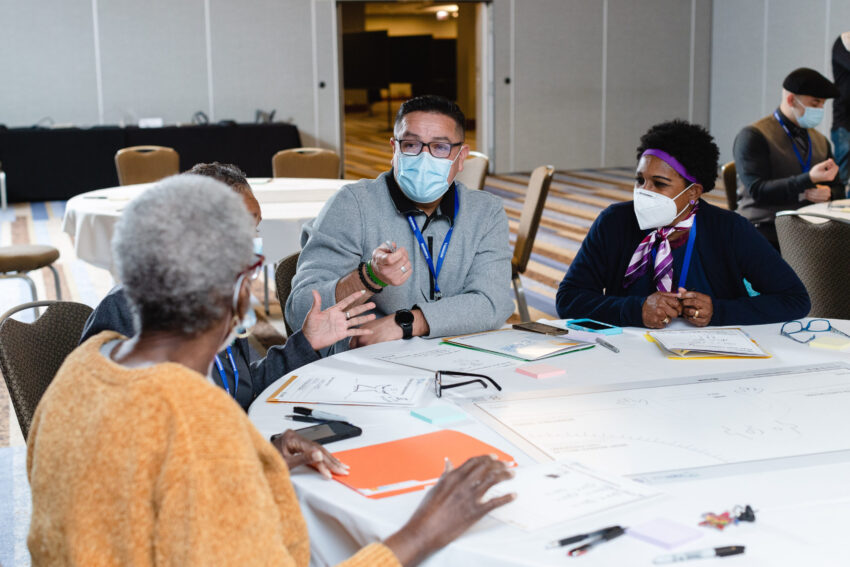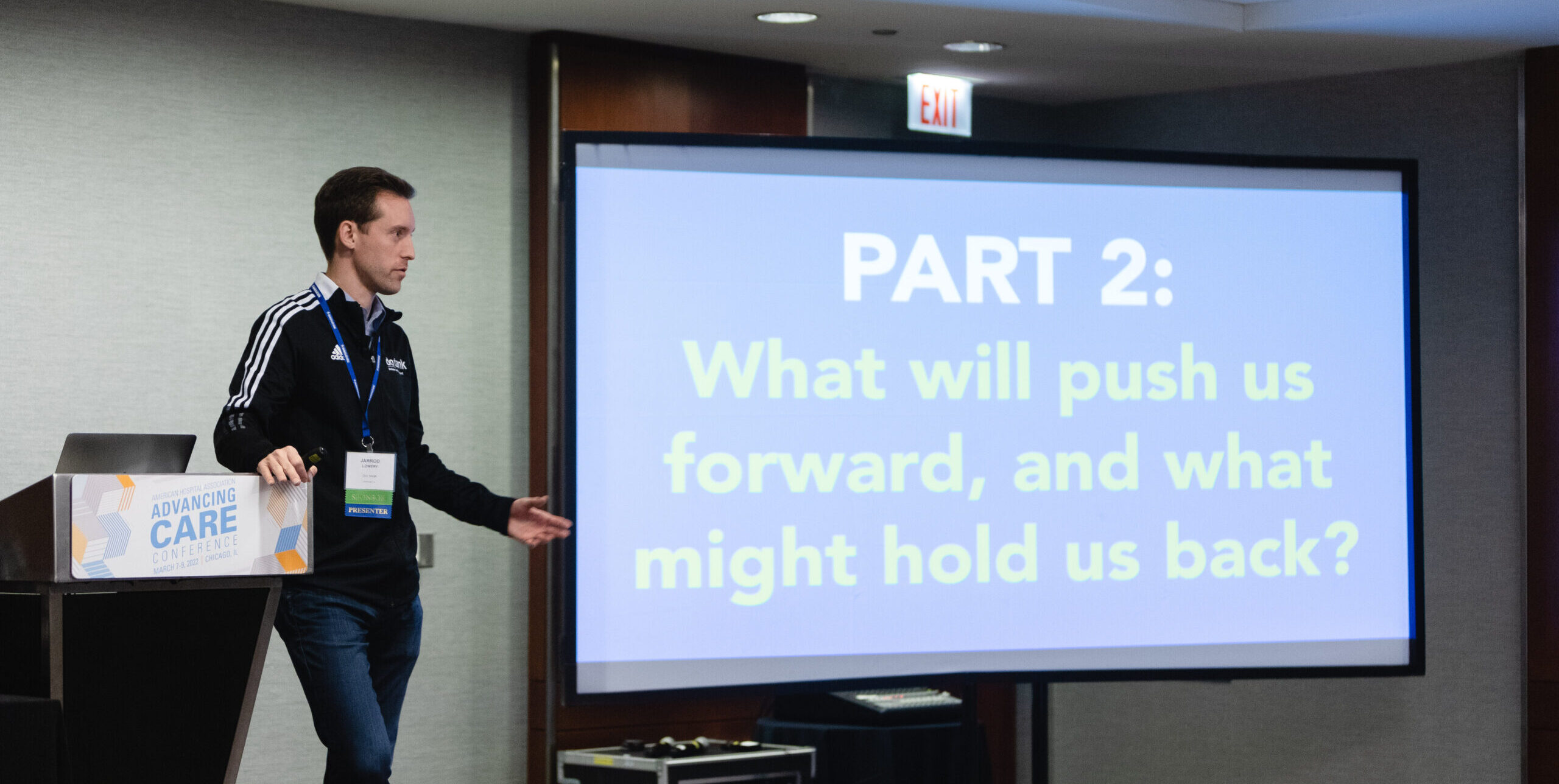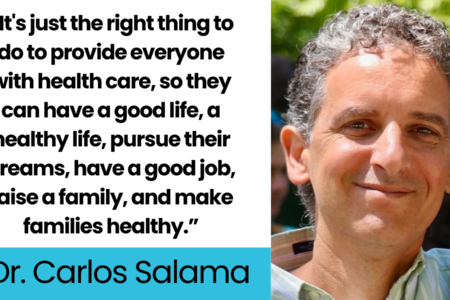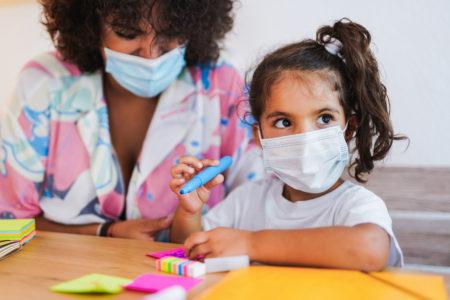
Share On Social!
Going on its fourth year, the Centers for Disease Control and Prevention’s (CDC) Project Firstline aims to provide all healthcare workers with the infection control training and resources they need to prevent the spread of infectious diseases.
Project Firstline is made up of a diverse group of more than 80 healthcare, public health, and academic partners, as well as state, local, and territorial health departments.
In collaboration with the National Hispanic Medical Association, Salud America! is one of those partners.
Today, we’re exploring some of Project Firstline’s collaborative efforts to support infection control training in the classroom.
AHA and League Partnership
In 2021, Project Firstline launched a new collaborative partnership with the American Hospital Association (AHA) and the League for Innovation in the Community College (the League) to support community colleges in training the next generation of infection control-oriented healthcare workers.
This initiative has included many efforts, from live programming with faculty to resource development and more.
Two new resources included in this collaborative effort are AHA’s new infection control video series and the League’s faculty toolkit.
Co-created with Project Firstline, these newly available resources offer opportunities to support the current and future healthcare workforce.
AHA’s New Infection Control Video Series
Led by Louella Hung and Vanessa Acheampong of the AHA, the video series aims to support the development of infection-control-oriented healthcare teams.

“In this project’s two-and-a-half-year duration, we’ve hosted several collaboration opportunities for healthcare students, faculty, and preceptors to discuss how infection control best practices are taught and retained,” Hung said. “We want to ensure that what students learn in the classroom aligns with what they experience at clinical sites and in healthcare settings.”
The series, Essentials for Teaching Infection Control, includes a free, three-video series and instructor’s manual to help teach or enhance existing infection control content found in classrooms or on-the-job training. These educational materials were created using real-world experience from community college educators and hospitals and health system teams.
The goal of these materials is to provide easy-to-adapt infection control resources to merge into curricula, orientations, huddles, and in-service learnings.
Access Essentials for Teaching Infection Control!
The League’s New Faculty Resource Kit for Enhancing Infection Control Curriculum
The League’s Faculty Resource Kit was developed from materials used by community college faculty teams from 16 community colleges across the US.
 The resource kit’s goal is to help faculty enhance and implement infection control content in their courses and programs.
The resource kit’s goal is to help faculty enhance and implement infection control content in their courses and programs.
The free kit includes a guide featuring steps and tools for cross-walking current curriculum with intended infection control learning objectives and outcomes, along with real-world examples and display items linking students and faculty to CDC’s Project Firstline resources and AHA’s Essentials for Teaching Infection Control video series.
Cynthia Wilson, Vice President for Learning and Chief Impact Officer at the League, emphasized, “The intent is not for faculty to replace existing curriculum. Instead, the tools and other resources are designed to help them review and, if warranted, enhance infection control teaching and learning across their programs.”
Access the Faculty Resource Kit!
Why Target Community Colleges for Infection Control Training?
Approximately half of health professionals across varied healthcare fields receive training at a community college, according to a Community College Research Center landscape study created with Project Firstline.
Additionally, community colleges are equipped to meet the unique training needs of a diverse, intergenerational healthcare workforce, and tailor training and educational resources to fill critical gaps in underserved communities.
Therefore, community colleges can help equip a future diverse healthcare workforce with a solid understanding of infection control theory and practice.
“Community colleges play an important role in training the next generation of healthcare workers. And, according to our research, they have strong potential to take on an even greater responsibility of this training,” Acheampong said. “That’s why the AHA and our partners developed the Essentials for Teaching Infection Control.”
Access Essentials for Teaching Infection Control!
What Can You Do to Promote Infection Control in Your Healthcare Setting?
Help keep yourself, your colleagues, and your patients safe from infectious disease threats by building on your infection control knowledge!
To show your dedication, sign this pledge to complete an infection control training or activity through CDC’s Project Firstline!
You can also share infection control training opportunities with healthcare colleagues via LinkedIn with our Project Firstline social media toolkit.
You can access more information about infection prevention and control in healthcare by visiting resources from CDC Project Firstline.
Salud America! at UT Health San Antonio is working with the National Hispanic Medical Association to bring Project Firstline infection control educational content to healthcare workers, so they are equipped with the knowledge they need to protect themselves, their facilities, and their patients (Latinos and all communities) from infectious disease threats in healthcare settings.
Check out some of the articles from this partnership:
- What is Project Firstline?
- What is the Goal of Infection Prevention and Control in Healthcare Settings?
- What’s a Virus?
- What is Ventilation and Why Does It Matter?
- Contact Time: What is It and How Does it Impact Infection Control?
- The Surprising Difference Between Cleaning and Disinfection
- What’s a Respiratory Droplet and Why Does It Matter?
- We Need to Talk about Hand Hygiene Again
- Why are Gowns, Gloves, and Eye Protection Recommended for COVID-19?
Check out some of the Latino healthcare workers who are heroes for infection control:
- Anna Valdez: Tackling Infection Control with Education from Classroom to Clinic
- Wanda Montalvo: Preventing Infections in Community Health Centers, Latino Communities
- Ricardo Correa: Endocrinologist and Infection Control Leader for the Latino Community
Learn More about Project Firstline!
Editor’s Note: This article is part of a collaboration between Salud America!, the National Hispanic Medical Association, and the CDC’s Project Firstline. To find resources training materials, and other tools to bolster knowledge and practice of infection control, visit Project Firstline and view Salud America!’s infection control content.
Explore More:
Infection ControlBy The Numbers
142
Percent
Expected rise in Latino cancer cases in coming years




[…] The pandemic is another chapter in the bitter story of American racism and inequality. Black and Latinx people are being infected and are dying at much higher rates than white Americans. Many people of […]
[…] coronavirus has killed over 61,000 Latinos in America according to the CDC, accounting for over 18.2% of the total COVID deaths in the […]
[…] Whereas Hispanics make up 11% of D.C.’s inhabitants, they signify 19% of the COVID cases, and 14% of the deaths. Equally, 46% of D.C.’s residents are Black, they usually make up an alarming 75% […]
[…] and historical mistreatment. According to the U.S. Centers for Disease Control and Prevention, Latino and Black American communities are three times more likely to become infected with […]
[…] Covid pandemic has hit the Latino community particularly hard, and data from the nonprofit health equity advocacy group Salud America! shows Latinos lead in the 0-24 age […]
[…] the pandemic, Latinos took major blows, both in terms of COVID-19 cases and also from the economic recession under former President Donald Trump. Nearly half (49%) of […]
[…] the positive trend, the harm may have already been done. The pandemic has disproportionately impacted Latino communities. Reuters reported that election-related or political disinformation that […]
[…] pesar de la tendencia positiva, es posible que el daño ya esté hecho. La pandemia ha impactado desproporcionadamente Comunidades latinas. Reuters informó que la desinformación política o relacionada con las […]
[…] residentes blancos muestran una tasa mucho más baja con 10 muertes por cada 100,000 habitantes(8 9) . Los afroestadounidenses por su parte, denuncian subsistemas de salud que les segregan […]
[…] https://salud-america.org/coronavirus-case-rates-and-death-rates-for-latinos-in-the-united-states/ […]
[…] https://salud-america.org/coronavirus-case-rates-and-death-rates-for-latinos-in-the-united-states/ […]
[…] communities have the second-highest number of COVID-19 cases in the U.S. They’re also more likely to become hospitalized and die from the disease than other […]
[…] total, around 160,000 Latinos were killed by COVID-19. This accounts for 16% of the 1 million deaths in the country. The […]